In the fall, there are often blessed days when you want to put aside the most urgent matters and spend some time in the garden. Flowers at this time look unusually touching. Trees and shrubs changing their colors add color to the garden.
All this beauty will soon face severe winter trials, and we can help the plants It’s easier to survive the upcoming cold weather.This article will discuss how to care for flowers and other decorative plants in the fall.
Caring for perennial flowers
Winter-hardy perennials (daylilies, perennial asters, delphiniums, yarrows, oriental poppy, echinacea purpurea, helenium autumn etc.) you need very little help: prune after frost, leaving short stumps, loosen the soil around the bushes. If we didn’t have time to feed in September, we will apply phosphorus-potassium fertilizers under the bushes: 2 tbsp. spoons of superphosphate and potassium sulfate per sq. m.
There is no need to insulate winter-hardy plants, and yet, if possible, we mulch them with compost or good humus, and later cover them with fallen leaves in case of snowless frosts. If there is not enough compost, we will first sprinkle on plants that have not been divided or replanted for a long time: they overwinter worse than young, well-established plants.
Late-planted plants will also require a little shelter: by winter they may not take root well enough. Even peonies, which are characterized by increased winter hardiness, if they are planted in the fall, are best mulched with humus or compost.
With heucheras it’s the other way around: they overwinter well at a young age, but over time their growth buds, rising above the soil level, can suffer in snowless winters. Therefore, to “age” plants Heuchera, and primrose, Phlox paniculata It is recommended to add soil in the fall. With the onset of stable cold weather, add soil to the rhizomes irises, to rake it out early in the spring.
What to do with lilies
Does not require shelter Asian lily hybrids. When preparing them for winter, we cut off the stems and make sure that during periods of winter thaws their area will not be flooded with melt water. If there is such a danger, we make diversion grooves.
For those less winter-hardy oriental and trumpet lilies We will stock up on insulation materials: leaves, grass, compost. We will cover these lilies after the first frost.
How to care for roses in autumn
Let's remove from the trellis climbing roses, we will bend, tie, lay (it is better not on the ground, but on boards, plastic boxes placed in a row so that the shoots do not come into contact with the ground). Preparation for the shelter must be completed before frost, until the shoots lose their elasticity.
We will cover climbing roses with film or non-woven material, leaving vents on the sides, and we will cover them with leaves later - after the first frost.
We cover in approximately the same way clematis, blooming on last year's shoots.
We are not in a hurry to cover the bush roses: let them harden at gradually lowering temperatures. In addition, under cover in warm weather, fungal diseases actively develop, and roses may die.
We cut the shoots of roses to mature wood and remove the damaged ones. We also cut off the leaves. We treat roses with copper-containing preparations (1% Bordeaux mixture, abi-ha-pic, 3% copper sulfate solution). While the soil is not frozen, we hill up the base of the bushes to a height of 15-20 cm. You can not hill up, but sprinkle the bushes with compost, dry soil, mixing it with sand (a bucket per bush).
The soil should not be taken near the bushes, so as not to expose the roots. Then we cover the roses with leaves. We cover the bushes with film or non-woven material (or both) on the arches, leaving the sides open (we will lower them only after the onset of severe frosts).Under such shelter, the roses are well ventilated, do not get wet in the rain, and this helps them not to get sick and to survive the winter well.
Roses die not so much from low temperatures as from their fluctuations and humidity under cover. Winters with frequent thaws are especially destructive for roses.
Before covering, the soil under the bushes can be sprinkled with wood ash, which dries the soil well and prevents the spread of fungal diseases.
If it is expected insulate roses for the winter only with soil or compost; for each bush we use buckets of three soils.
Perennial shelter
We will prune herbaceous perennials only after the temperature at night has steadily dropped to sub-zero levels.
After a steady cold snap, we cover insufficiently frost-resistant perennials. We cover them with earth or mulch, cover them with non-woven material folded in two layers, securing it to wire arches.
You can also use improvised materials. For example, having cut off the perennials, we cover them with soil or compost, cover them with plastic boxes, on top of which we throw non-woven material. Sprinkle the ends of lutrasil or other material with earth to prevent it from blowing away.
What flowers are planted in autumn?
IN October can be planted roses, other ornamental shrubs. The soil will not freeze for a long time, and the plants will have time to take root in the new place. We cover young rose bushes for the winter in the same way as adults. Be sure to mulch the soil around other new plantings. Under a layer of compost or leaves, the soil remains moist and warm for a long time, i.e., favorable for root growth.
We plant bush roses half a meter apart from each other.
In October we plant bulbous plants: first - daffodils, hyacinths, and towards the end of the month - tulips. Bulbs purchased in a store, as a rule, do not need pre-planting treatment (they are already treated), but bulbs dug up in your own plot or donated by friends are better treated against diseases with a fungicide Maxim the summer resident: Soak for half an hour in a solution (2 ml per liter of water), then dry and plant.
We plant the bulbs that we plan to dig up next season more often - every 10-15 cm, so that the flowering is spectacular. If we are not going to dig it up, we will plant it less frequently, leaving room for the nest of bulbs to grow.
There is no great need to “insulate” tulips, although a layer of compost or humus will not hurt them: in the spring the flowers will be larger and the flower stalks will be longer.
You need to take care of hyacinths and daffodils by sprinkling the planting site with compost, humus, and throwing leaves. After snowless winters, “lunges” occur in the plantings of these bulbous plants. The bulbs will not necessarily die, but will not bloom if frost damages the flower buds.
We dig up tubers of gladioli and dahlias
October is the time to dig up your corms. gladioli. But if thrips have worked on the plants (colorless “striations” and “spots” on the leaves and petals), it is advisable to treat them with an insecticide a week before digging (alatar — 5 ml, Aktar - 8 g per 10 l).
If the time for treating gladioli is missed, it is pointless to treat in cold weather (thrips goes to “winter” under the covering scales of the corms), you will have to treat after digging. Having dug up the corms of the gladioli, we cut off the stems, leaving 5-6 cm of stumps. Dry them for a month in a warm place.
We dig and kbubneroots dahlias, rhizomes Cannes and, without shaking it off the ground, we lower it into storage and cover it with sand or sawdust. We place the cut stems and leaves in a compost heap, sprinkle with wood ash, cover with soil, and moisten.
What care do ornamental shrubs require?
Let's think about ornamental shrubs, they also need our care and attention. You don't have to worry too much about spirea, bladderwort, cinquefoil, if the bark on their shoots has hardened, that is, has matured well. Although the shoots will ripen until frost.
Less frost-resistant shrubs (weigela, action, forsythia) may suffer even if their shoots ripen well. Covering them is too labor-intensive, but making sure that the root system is not damaged and the plants can recover even after an unfavorable winter is easy: we mulch the root zone with compost. And the thicker the layer, the better the roots are protected.
A mulch layer will not be superfluous even for frost-resistant shrubs: the warmer the roots are in winter, the more active the growth of shoots in spring.
You've probably noticed how everything in the garden actively grows after a snowy winter, and how long it takes for plants to die after a “black” (snowless) winter.
It is imperative to prepare shrubs that overwinter with green foliage for shelter (boxwood, mahonia holly): We will stock up on non-woven material, with which we will cover the crown after the onset of frost, with wooden shields or other screens with which we will protect the plants on the south side so that they do not get burned in late winter and early spring.
In the meantime, spray the bushes with a 1% Bordeaux mixture or abiga-pik solution (40-50 g per 10 liters of water) against various types of leaf spots.
It is advisable to treat deciduous shrubs for fungal diseases, especially if the diseases make themselves known through spots on the leaves and drying shoots. We cut out diseased shoots to living tissue. Cover the resulting wounds with oil paint based on drying oil. Spray trees and shrubs on whose branches mosses and lichens have settled with a 3% solution of iron sulfate.
It is advisable to strengthen the pyramidal crowns of coniferous plants by loosely tying them with twine so that the branches do not break off under the weight of snow in winter. The same white non-woven material, loosely thrown over the crown, will save conifers from burns
The lawn also needs autumn care. If a haircut is required, we will cut it, but not as short as in the summer: in winter we leave the grass stand 15-20 cm high. We constantly remove fallen leaves from the grass, under which the grass may disappear during the winter. You should not feed the lawn in October to stimulate growth, but you can sprinkle the turf with a thin layer of compost and then comb it with a rake.
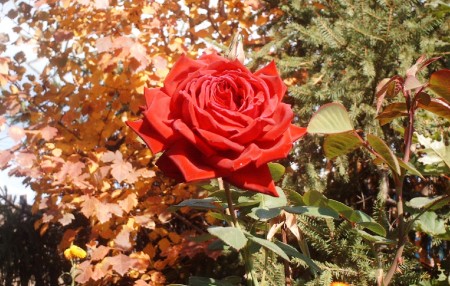
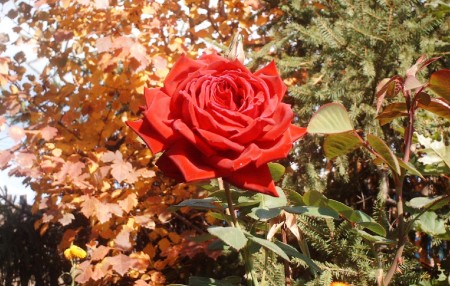
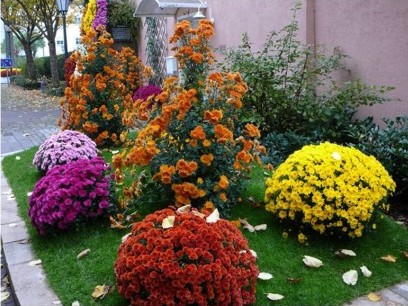
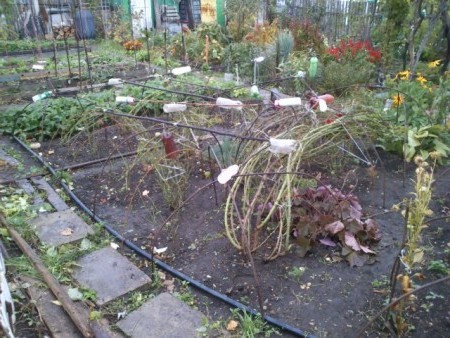
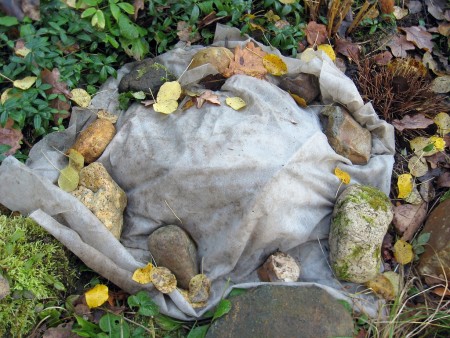
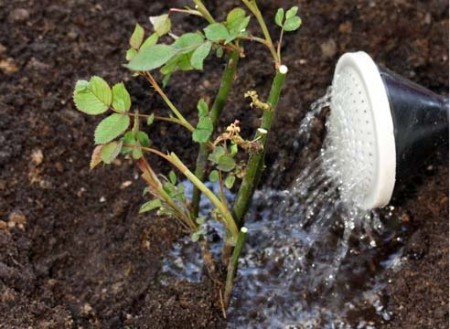

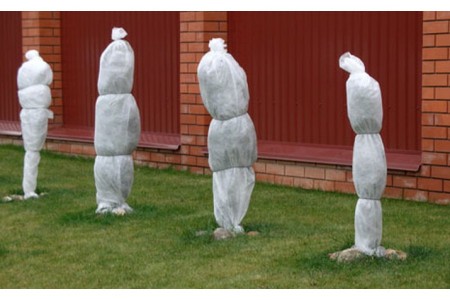

 CUCUMBERS NEVER GET SICK, I'VE BEEN USING ONLY THIS FOR 40 YEARS! I SHARE A SECRET WITH YOU, CUCUMBERS ARE LIKE THE PICTURE!
CUCUMBERS NEVER GET SICK, I'VE BEEN USING ONLY THIS FOR 40 YEARS! I SHARE A SECRET WITH YOU, CUCUMBERS ARE LIKE THE PICTURE! You can dig a bucket of potatoes from each bush. Do you think these are fairy tales? Watch the video
You can dig a bucket of potatoes from each bush. Do you think these are fairy tales? Watch the video
 How our fellow gardeners work in Korea. There is a lot to learn and just fun to watch.
How our fellow gardeners work in Korea. There is a lot to learn and just fun to watch. Eye trainer. The author claims that with daily viewing, vision is restored. They don't charge money for views.
Eye trainer. The author claims that with daily viewing, vision is restored. They don't charge money for views. A 3-ingredient cake recipe in 30 minutes is better than Napoleon. Simple and very tasty.
A 3-ingredient cake recipe in 30 minutes is better than Napoleon. Simple and very tasty. Therapeutic exercises for cervical osteochondrosis. A complete set of exercises.
Therapeutic exercises for cervical osteochondrosis. A complete set of exercises. Which indoor plants match your zodiac sign?
Which indoor plants match your zodiac sign? What about them? Excursion to German dachas.
What about them? Excursion to German dachas.